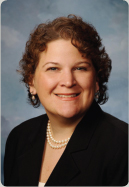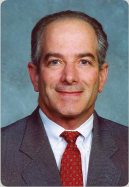EXECUTIVE SUMMARY:
Physician documentation in the patient record has long served multiple purposes, from core clinician-to-clinician communication, to billing requirements, to data analysis tasks. Now with the advancing progress of the meaningful use process under the federal Health Information Technology for Economic and Clinical Health (HITECH) Act, even more elements are being added to the demands on M.D. documentation. What kinds of strategies are the leaders of pioneering organizations coming up with that might serve as models for their peers across the industry?
Key Tensions
- Physician notes as M.D. to M.D. communication versus physician notes as data reporting/analysis source
- M.D. documentation as physician tool versus M.D. documentation as facilitator of an electronic medical record system
- M.D. documentation related to ordering in the CPOE versus M.D. documentation as notation (workflow)
For CIOs and other healthcare IT leaders-but most especially for CMIOs-the issues around physician documentation in the patient record have long posed major challenges. After all, what is physician documentation really for? In point of fact, the bundle of tasks under the umbrella called physician documentation serves many different purposes and requirements, from the most basic, including for individual physicians to be able to recall details about their patients and for them to be able to pass on that information to other physicians and clinicians, to a host of other purposes, including billing, medical-legal compliance, and clinical data analysis.
Now, as the quality data reporting requirements embedded in the meaningful use process under the HITECH Act add yet another layer of complexity, that new element in the mix is forcing healthcare IT leaders to go back to the basics in order to make physician documentation better for everyone-especially for the physicians themselves. All the stakeholders around the table-including clinicians, clinician informaticists, IT executives, health information management professionals, and financial and administrative managers-can agree on at least one thing: the process of optimizing physician documentation in the electronic health record (EHR), whether in the inpatient or outpatient spheres, is complex and challenging.
And underlying and cross-hatching the challenges over the multi-purpose nature of this set of tasks is the perpetual, dynamic tension between free-text and structured documentation in terms of how medical documentation is organized and presented to end-users. What's more, the very organization of the EHR, in which ordering is artificially separated from notating as a completely separate task, adds to the difficulty of improving physicians' workflow, and thus hampers adoption. So how will this all work out?
Care Management Focus: How One Medical Group Eased the Documentation Transition for its M.D.s
For James L. Holly, M.D., CEO of the 22-physician group Southeast Texas Medical Associates, in Beaumont, Texas, the key to solving the physician documentation side in the medical group context lies in embracing the very broadest goals of care management, to motivate doctors forward. Resolving the contradictions within physician documentation processes “isn't as big a problem on the outpatient side as it is on the inpatient side,” Holly says. “However, we have designed structured data sets for the hospital that work beautifully to provide a structured data set that works magnificently. And the most important document on the inpatient side is not the history and physical or the daily progress notes, but the discharge summary.
“So we now call it the hospital care summary and the post-hospital plan of care treatment plan,” Holly says. “That's the baton we hand off to the patient, with reconciled medication lists, follow-up care information with the provider's information; it includes a follow-up call scheduled for the next day, and a number of other things. So I think the physician documentation problem is solvable, it just takes a little more creativity and time to solve the problem.” That, and very importantly, of course, the fact that he and his colleagues are moving forward under a banner of continuous performance improvement and care quality optimization.
STRATEGIZING AROUND STRUCTURES
Nationwide, healthcare IT leaders at pioneering patient care organizations are helping their colleagues to think through this Gordian knot of considerations, and coming up with a variety of strategies. For example:
-
At the Arlington, Texas-based Texas Health Resources (THR), CMIO Ferdinand Velasco, M.D., says he and his colleagues at the 24-facility community hospital-based system learned an important lesson after their first two facility go-lives with computerized physician order entry (CPOE). It is that physician resistance to CPOE that could be considerably overcome through concurrent CPOE-physician documentation rollout, with training of the doctors in documentation prior to actual CPOE go-live. As a result, THR leaders are now rolling both systems out concurrently in their remaining facilities, using exactly that strategy.
-
At the Winter Park, Fla.-based Adventist Health System, where 18 of 26 hospitals have so far gone live on CPOE, Kshitij Saxena, M.D., medical director, medical informatics, reports that he and his colleagues have actually gone live with physician documentation many months before CPOE. The go-lives have taken place in each of the system's facilities that have rolled out CPOE so far, as well as in those hospitals currently migrating to CPOE (as part of a system-wide CPOE rollout scheduled to go live by this fall). “The challenge is to get over the hump, to break the first barrier,” Saxena says. “And the first barrier is to open the note the first time. And that's why we initiated physician documentation long before CPOE. If you do it that way, you're taking away a lot of the amount of time it takes to train the doctors on electronic physician documentation, when they are going live on CPOE.” Letting physicians working on progress notes six months to a year before CPOE go-live, he says, gets them used to working in the EMR, and ensures that they willingly give up doing paper-based orders. Indeed, he reports, he and his colleagues have achieved 100-percent CPOE adoption in the facilities in which CPOE has gone live so far. He presented a poster session on the topic, “Mandatory CPOE Facilitates Adoption of Electronic Provider Documentation,” at the HIMSS Conference in Orlando in February, discussing his and his colleagues' success with that strategy.
 Ferdinand Velasc o, M.D.
At the 20-hospital University of Pittsburgh Medical Center (UPMC) health system, Vivek Reddy, M.D., medical director, hospital information technology, reports that his organization has been navigating towards an optimized happy medium between too much and too little structuring of data. “The solution that we've been working very hard at is sort of two-fold,” he says. “One is that we structure a section of everybody's note to be something that's not ultra-structured, but really is an impression or integration component, to really convey a message. And in many of our services, we're about to make this standard; we promote that section of the note to the top of the note. We really do want to create a view that's streamlined, so you get the author of the note, name of the note, and their impression. We make the signal-to-noise ratio ‘high-signal,’ so I can just quickly read the note and then drill down more for other things,” he says. “We're trying to replicate electronically what doctors would do when they visually scan paper records.”
PARSING THE ISSUES
Vivek Reddy, M.D.
Medical informaticists Velasco, Saxena, and Reddy, and their colleagues at THR, Adventist, and UPMC, are all finding their way towards strategies that engage physicians in their organizations and achieve successful adoption of both documentation and CPOE. Nationwide, industry experts and other healthcare IT leaders all agree, this is an area that will remain in dynamic flux for some time, particularly as the journey forward into meaningful use continues and intensifies.

Bobbie Byrne, M.D.
Part of what makes all this so hard is two sets of overlapping tensions, says Bobbie Byrne, M.D., vice president for health information technology at Edward Hospital, a 309-bed, community hospital-based integrated health system in the Chicago suburb of Naperville. “There are really two tensions,” Byrne says. “One is the free text-versus-structured-documentation tension, and the other is the tension between the physician documentation as a billing vehicle and as a clinical communication tool.” What's extremely important, she says, is for physicians and physician informaticists to be involved from the very outset in parsing out the issues going forward, as they work with others to develop workable solutions for their particular organizations.

Jeffrey Rose, M.D.
What becomes quickly apparent, she says, is the need to make distinctions between “those things you can really check boxes for-physical exam review of symptoms, family history, social history, history of smoking, alcohol, and drug use, for example”-and those that should be left unstructured, including the core narrative of the patient story-and which can be data-mined best using natural language processing tools. Her strong advice? “Identify the data elements that need to be structured and then leave the rest to the individual physicians' preferences, because in reality, a relatively small proportion needs to be structured.”
Workflow issues remain very problematic, too, notes Jeffrey Rose, M.D., vice president, clinical excellence, informatics, at the 67-hospital Ascension Health, based in St. Louis. The very fact of the artificial separation between documentation and ordering in the EHR is a fundamental challenge when it comes to physician adoption of either system, Rose emphasizes. “In the old days, you'd write a SOAP [subjective, objective, assessment, plan] note, and as part of that plan, you'd write down what you were ordering on the patient. Then you'd pull out your lab form and other forms and other things. When people designed the EMR,” he says, “what should have happened is that the SOAP note, your documentation, should have generated an order. But unfortunately, they separated the two processes, and in many cases, now, in fact, you're ordering without doing any documentation.
“So what they've put in, in many cases, is an automated ordering system, not an EMR,” he continues. “And once you've entered all your orders, I want you to go back and document your care now, which is just duplicative.” Every strategy healthcare IT leaders can use to achieve physician adoption of documentation systems has to acknowledge those problems inherent in EHR systems, stresses Rose. He empathizes very strongly with physicians in practice, even as he is also charged with helping lead his colleagues in the vast Ascension system forward in using clinical data points (often derived from physician documentation) to improve patient safety, care quality, and effectiveness performance.
Given this context, what should CIOs and CMIOs do? “They should strive to find or push the vendors to create a unified solution, in which documentation and ordering are uniform, simultaneous processes,” Rose says. “The other thing is that any documentation that's done will be a mix of granular and structured documentation; and it also has to contain the ability to dictate or free-text nuanced communications, so you retain the patient's story.”
HIM, MU ISSUES AND DOCTORS
Susan Belley, manager of coding and documentation improvement at the Cleveland Clinic Health System, a 1,300-bed integrated health system in Cleveland, agrees with Rose in her concern over retaining the patient's story in the EHR. She says the patient's story is vital to coding and health information management issues as well as to physicians' concerns around communication through progress notes and other forms of documentation. “We always say in coding that we are trying to tell the patient's story, in an abbreviated format, if you will, because people don't want to read something all over again. And you can tell a story in codes; but in order to tell the story of what has happened, you have to have a richness of documentation; so you need to make the provider's day easier and better, yet still capture the full essence of the patient, because so many things are driven by the coded data.”
Belley has been working closely with William Morris, M.D., vice chairman of clinical systems and a hospitalist in practice at the Heart and Vascular Institute at Cleveland Clinic Health System, and other colleagues, around improving the quality of physician documentation. The project began back in 2009, and has gained the support of the cardiovascular physicians at the Heart and Vascular Institute, Morris says, because, “they've recognized that, right or wrong, this is how we're viewed”-that is to say, through the lens of how physicians have documented their diagnoses and treatment steps. As a result, his physician colleagues at the Institute have embraced the current project to improve physician documentation and to embed truly helpful clinical decision support into the documentation process. Doing so, he says, “is how you're going to transform this from an electronic version of a paper record into a redefined way of using the computer to be more of a mentor and a colleague rather than just a word processor to just hold information.”
THERE ARE REALLY TWO TENSIONS. ONE IS THE FREE TEXT-VERSUS-STRUCTURED-DOCUMENTATION TENSION, AND THE OTHER IS THE TENSION BETWEEN THE PHYSICIAN DOCUMENTATION AS A BILLING VEHICLE AND AS A CLINICAL COMMUNICATION TOOL. - BOBBIE BYRNE, M.D.
PHYSICIANS' FRUSTRATION WITH REIMBURSEMENT- AND HEALTHCARE REFORM-DRIVEN CHANGES VERY MUCH AFFECTS THEIR WILLINGNESS TO PARTICIPATE IN MEANINGFUL USE-RELATED ACTIVITIES. BUT WHEN THEY REALIZE THEY CAN ACHIEVE TRUE CONTINUITY OF CARE FOR PATIENTS THROUGH THIS TECHNOLOGY, IT'S A BIG GAIN FOR THEM. - BRIAN YEAHMAN, M.D.
FINDING A BALANCE
Figuring out the solutions to these various elements of the puzzle will be important, says Brian Yeaman, M.D., CMIO at the three-hospital, 500-bed Norman Regional Health System, based in Norman, Okla. He agrees with those interviewed for this article that the key will be to offer physicians a workable approach that balances out the need to derive data and other processes from physician documentation, while retaining the patient story, enhancing workflow, and benefiting patients, all at the same time. At his organization, the problem list is templated, “so that you can quickly capture a lot of the medical history, based on what's already known about the patient, for example, what the ED doctor has already documented, Yeaman says. “Further, the progress note has to do other things-it needs to begin to spawn more and more clinical decision support, so that it will evolve forward from the old SOAP note into a clinical decision support tool.”
When discussing physician documentation strategies with doctors, Yeaman says, it's crucially important to remember that “physicians' frustration with reimbursement- and healthcare reform-driven changes very much affects their willingness to participate in meaningful use-related activities. But when they realize they can achieve true continuity of care for patients through this technology, it's a big gain for them. So when I talk to physicians about this, I don't talk much about money and budgets or meaningful use; I talk to them about patient safety. And I did that before meaningful use.”
In the end, everyone agrees, it will be a careful, clever balance of strategies that will lead to successful physician adoption of physician documentation (and CPOE), as well as successful data reporting from the physician documentation piece of the EHR, for meaningful use, and success meeting the other needs around documentation. And that will mean giving the doctors things they can appreciate. At Texas Health Resources, Velasco notes that now, “what we actually find when we go live is that, number one, there are a lot of tools to facilitate documentation in the electronic record-macros, the ability to copy and paste; so we've found that when we emphasize physician documentation, they become comfortable faster than with CPOE, and that that comfort level makes it easier to go forward with CPOE, and we can actually accelerate CPOE adoption.”
Will large numbers of patient care organizations achieve such win-wins as they go forward? The answer will most certainly depend on the strategies and savvy of their healthcare IT leaders.
Healthcare Informatics 2011 May;28(5):08-14
|